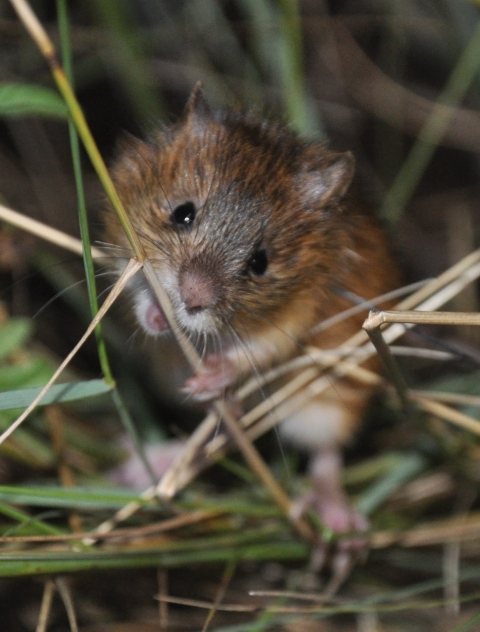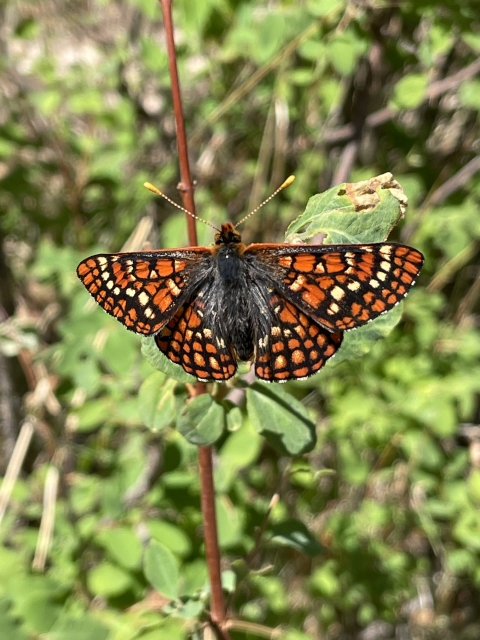Featured Species
New Mexico Meadow Jumping Mouse
This endangered species is found in New Mexico, eastern Arizona, and southern Colorado, where it relies on habitat areas along rivers to make its home. It is a true hibernator and is very sensitive to changes in the riparian riparian
Definition of riparian habitat or riparian areas.
Learn more about riparian (along rivers or stream edges) vegetation conditions it needs. It requires perennial flowing streams or streams that are at least flowing during their active season (May-October). Our office completed a recovery plan in 2023 and is now leading the development of a plan to guide the recovery efforts necessary to protect this species from further decline. This will include significant habitat protection and recovery actions on degraded critical habitat on both public and, where possible, private lands with willing landowners. The recovery planning and implementation process involves multiple partners from the U.S. Forest Service, State game and fish agencies, academics, and Tribes, along with U.S. Fish and Wildlife Service biologists. We anticipate having a final recovery implementation strategy completed in 2024.
Black-footed Ferret
The black-footed ferret is a specialized member of the weasel family native to the open prairie habitat found in the interior parts of North America. It is entirely dependent upon prairie dogs and their colonies for food and shelter. Our office has been actively supporting an ongoing and successful reintroduction effort in Mora County, New Mexico, on a private ranch. The year 2023 was the fifth active year for this project, which includes four releases of black-footed ferrets from the U.S. Fish and Wildlife Service National Black-footed Ferret Conservation Center (NBFFCC) in Colorado. Annual surveys have detected active breeding females with kits during the first three years for this project. Unfortunately, during surveys on the ranch in late 2023, few prairie dogs, and only one ferret, were seen. The loss of the prairie dog colony was likely caused by sylvatic plague, which will decimate a prairie dog colony. This was one of the few black-footed ferret recovery actions done on private land in the United States. This office is working with the NBFFCC and the New Mexico Department of Game and Fish to continue monitoring this colony in 2024 and 2025 to confirm if the prairie dog colony is truly inactive, and if any ferrets are still present.
Sacramento Mountains Checkerspot Butterfly
The Sacramento Mountains checkerspot butterfly lives only in mountain meadows near Cloudcroft, New Mexico. They are pollinators for local wildflowers and lay their eggs on New Mexico beardtongue. In recent years, this butterfly has declined in abundance due, in part, to drought and heavy browsing by large herbivores. We are currently collaborating with the U.S. Forest Service and some non-governmental organizations to conserve this scarce species. Currently, our conservation team is focusing on protecting meadow habitat, planting native plants to provide pollen, and captive breeding and raising of the checkerspot butterfly.
Office Species by Taxa
| Taxa | The NMESFO functions as the “lead” office for the following listed, proposed, or candidate species. | The NMESFO also has responsibility to help conserve and protect the below listed, proposed, or candidate species. |
|---|---|---|
| Amphibians | ||
| Birds |
| |
| Fish | ||
| Invertebrates |
| |
| Mammals | ||
| Plants |
| |
| Reptiles |


